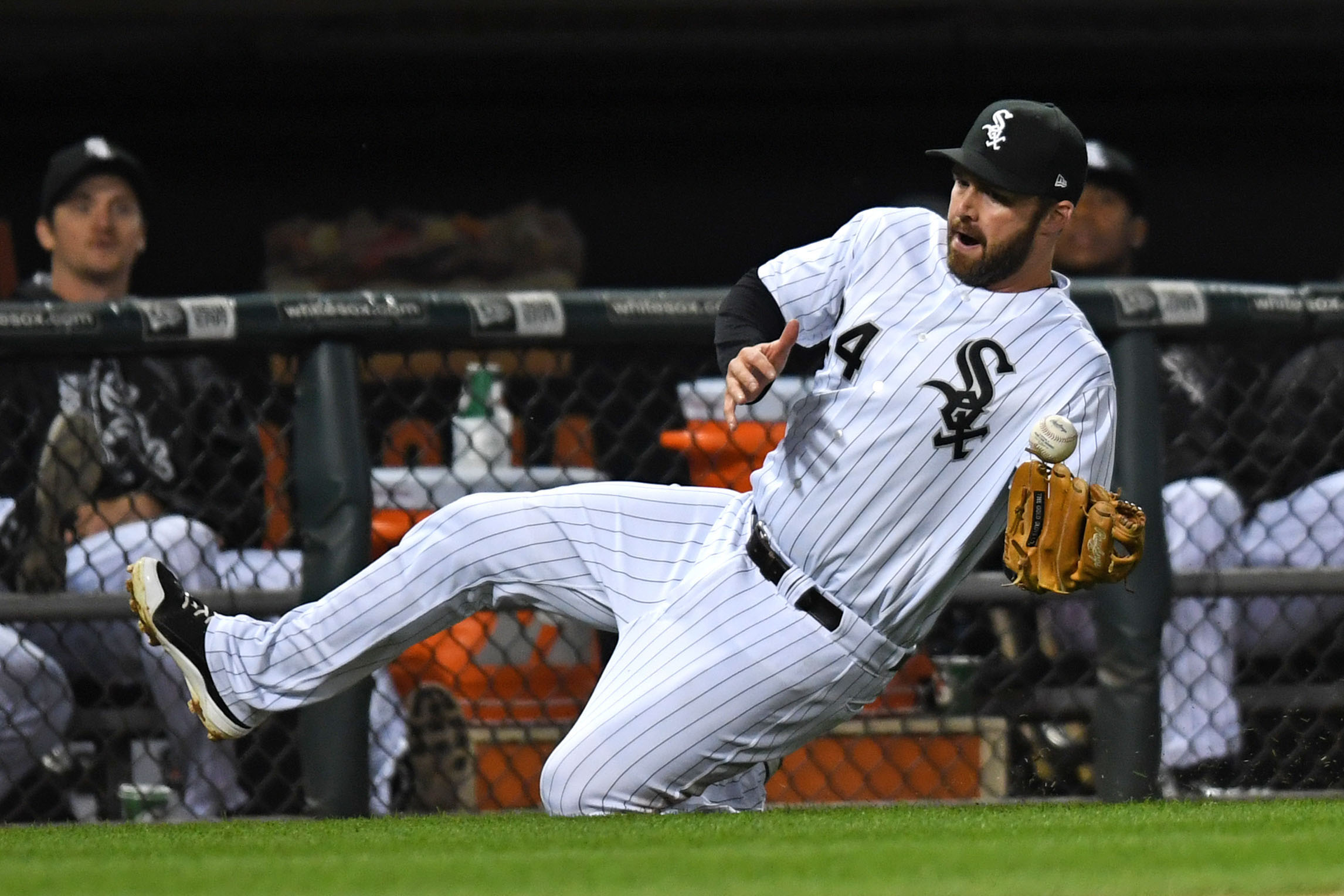Over the next few weeks, BP South Side will be reviewing the performance of all 51 players who suited up for the 2017 White Sox. Players whose seasons were particularly noteworthy will get their own standalone article, while smaller contributors or those who were traded/cut will be grouped together. We’ll do our best to summarize and analyze what each player brought to this year’s club, what we learned, didn’t learn, and what it all means for his future with the team.
The White Sox entered the season as a rebuilding team despite the lingering veteran talent on the roster. Their purpose for the season was clear. They wanted to get younger and more talented in order to prevent the mistakes of years past from happening once again. The lingering talent early in the season made the rebuilding White Sox look different from most rebuilding teams. As the season wore on, however, and talent was traded away, playing time started landing in the pockets of many has-been prospects. Matt Davidson, despite also getting a lot of work early in the season, was one of those has-been prospect beneficiaries.
Davidson had a solid 2016 season in Charlotte, hitting .268/.349/.444 with 10 home runs. That performance earned him a call-up toward the tail end of last season, but he injured his foot during his first game (an odd curse on a season that hardly needed more to go wrong) and never saw the field again until 2017. The whole point is that there was promise. Davidson was the prized prospect that landed in Chicago during the first of now many Addison Reed trades, but he struggled in the White Sox system. Finally, at age 26, it seemed like he might be able to put things together and become a useful player.
But baseball is cruel, and it cares not for the victims it leaves in its wake. The 9.8 percent walk rate in Charlotte from 2016 became just 4.3 percent with the White Sox this season, causing his OBP to crater to .260. That meant his slash line of .220/.260/.452 was awfully unimpressive during a season where home runs and power were favored league-wide. He hit 26 home runs, but so did Curtis Granderson, Nick Castellanos, and Hunter Renfroe. Scooter Gennett, Eddie Rosario, and Rougned Odor all hit more home runs than Davidson in 2017. His 26 in just fewer than 450 plate appearances may have been a glimmer of hope in other years, but in this season of the long ball it was disappointing for a player whose power carries his game.
What does this mean for the future of Davidson? He’ll be entering his age 27 season without having shown many signs of progress towards becoming a valuable player. That usually doesn’t bode well for the player in question. The good news for Davidson, however, is that the White Sox will once again be towards the bottom of the American League standings in 2018.The only immediate threat to Davidson’s position at third is Yolmer Sanchez, who will find himself roaming all over the White Sox infield. Most days that would result in Sanchez at third with the power duo in the middle, but Davidson would easily find some starts at third given Sanchez’ flexibility.
If the team decides to ride Davidson at designated hitter, there are even fewer candidates to take his spot. The White Sox could decide they want to give Ryan Cordell, Casey Gillaspie, or Rymer Liriano a chance in that spot to prove their bat, but they will likely have similar expectations as Davidson. The argument for simply trying those other players for the sake of change is a good one — you never know which player is going to breakout, but that argument can also be applied to Davidson, who has hardly been given a full shot in the big leagues. By that standard, Davidson is actually the prospect with the highest pedigree and should be an option fully exhausted before moving onto someone like Cordell (who is only a year younger than Davidson despite his prospect status) or Gillaspie.
The White Sox could easily decide that Davidson has already exhausted all of his chances, though. That would not bode well for the big man at the hot corner. As easily as Davidson could find himself receiving just as much, if not more, playing time in 2018, he could find himself floating in the abyss without a team if the White Sox let him go. That is, Davidson’s future is far from certain. There are decisions to be made by people with far more information and knowledge. Right now it’s hard to predict which way those decisions will go. There is uncertainty in Davidson’s future because of his lackluster performance in an environment in which he should have flourished.
Lead photo credit: Patrick Gorski-USA TODAY Sports
